I think I may be adapting to life here in Siberia. This evening I had my first trip to the banya... after cleaning up, I walked back to my balok wearing only a T-shirt and light pants. When I paused to look at my thermometer and saw that the temperature was -16 F! I wanted to show you a few images from yesterday... For my first trip in the Vestikhot (like a modified tank) I got to ride "shot-gun" while Zhenya drove us out to the permafrost bore hole that was drilled last fall. Martin and Jochem, the German down-hole logging crew wanted to inspect the hole to determine if they could safely deploy their scientific instruments down the bore-hole. This hole has some added challenges because there is a thermister string (temperature sensors) already in the hole. This 140 meter deep hole in the Lake E permafrost is one of the deepest permafrost monitoring holes in the global permafrost monitoring network.
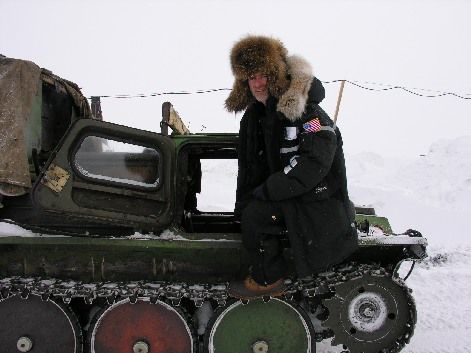 First ride on a Vestikhot
First ride on a Vestikhot
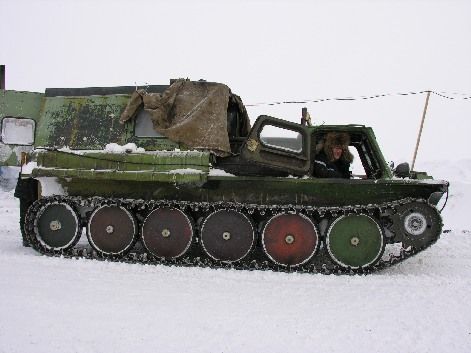 First ride on a Vestikhot
First ride on a Vestikhot
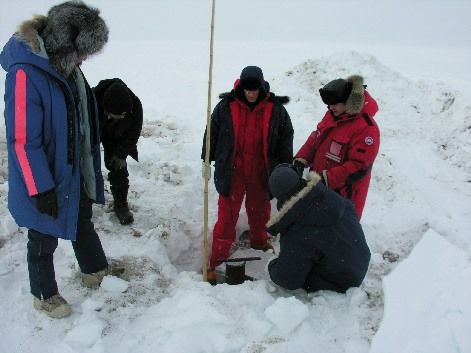 Visit to the Permafrost drill site (D3) with the Martin and Jochem, the German bore hole logging team.
Visit to the Permafrost drill site (D3) with the Martin and Jochem, the German bore hole logging team.
Today was a long day since I spent a 12-hour shift out on the drill rig. (Wolfington and Pawville residents check out the photo gallery for pictures of your flags out at the drill rig!)
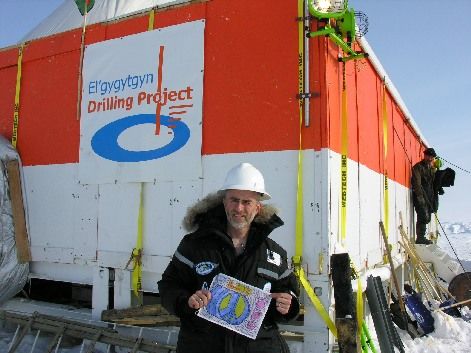 Hello to the citizens of Mr. Andrew’s class at Northern Elementary!
Hello to the citizens of Mr. Andrew’s class at Northern Elementary!
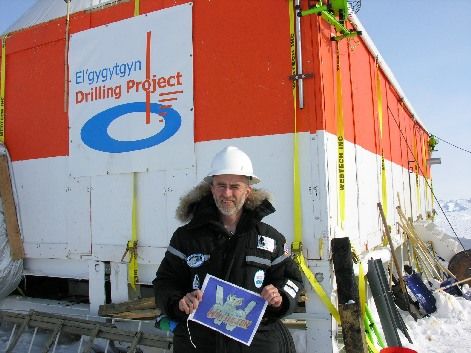 Hello to the citizens of Mrs. William’s Wolfington class at Northern Elementary!
Hello to the citizens of Mrs. William’s Wolfington class at Northern Elementary!
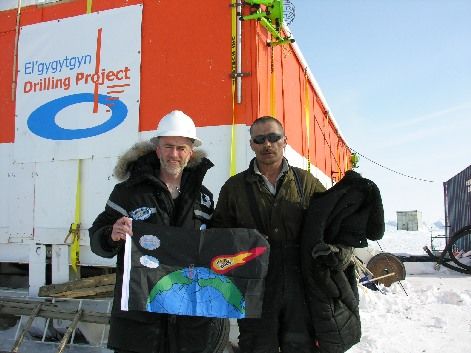 Flying the Lake E flag out at the drill rig with Zhenya, our Vestihot driver.
Flying the Lake E flag out at the drill rig with Zhenya, our Vestihot driver.
Much of the day today was Geologic Sediment Drilling 101 for me. I had a number of patient, individual tutors. Because of the earlier problems drilling, the crew is proceeding with extra caution to make sure the borehole is stable. While various members of the day shift had a moment of down time, I asked them many questions. Doug Schnurrenberger, the DOSEC drilling supervisor from CO gave me a tour of the various parts of the rig and drilling equipment. While some of the Russian drillers were handling pipe, John Joice from CA, gave me a huge appreciation for the hard work involved in drilling. While members of the German science team, Volker, Julia, Carsten and Pavel Minyuk one of the project chief scientists answered may of my scientific related questions and helped me with ideas for some lesson plans that I can use in my classroom. Look for some more images and video of life on a drilling platform sometime soon.
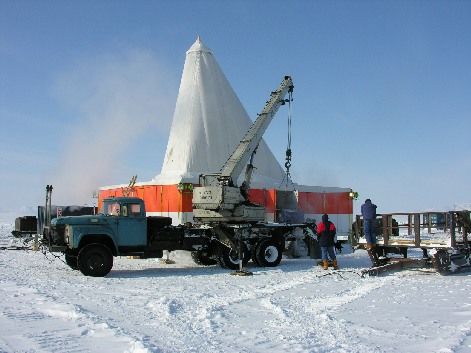 The camp crane delivers the down-hole logging equipment to the drill rig
The camp crane delivers the down-hole logging equipment to the drill rig
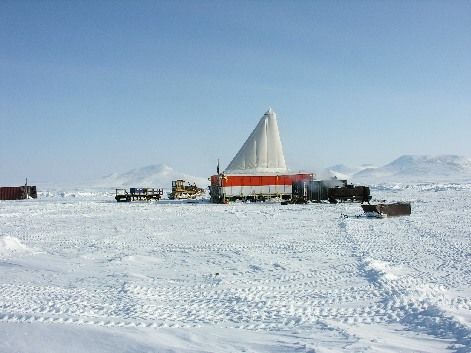 Bull dozer delivers equipment to the drill rig
Bull dozer delivers equipment to the drill rig
Since we did not extract any sediment cores on the day shift today, the science team had a slow day. There were times we helped the drillers...my first job on the rig was to use the "shop-vac" to suck up spilled water. (Drilling in a lake is a very wet undertaking!) Although the drill rig is heated, if water stays on the floor, it will quickly freeze causing dangerous working conditions. While the drillers were working on other details, Julia and I helped our ice engineer, Volker Neth, construct snow fence around the drilling platform. During the next blizzard, we do not want the snow to accumulate on the drilling platform. Since snowdrifts of five or six feet are heavy, they will add un-wanted weight to our ice platform. Hopefully the snow fences we constructed today will prevent snowdrifts on the drilling platform. In addition to the fence construction, Volker drilled holes in the ice around the drill rig to monitor the ice thickness to ensure the safety of our working conditions. The ice we measured in the picture below was over two meters thick.
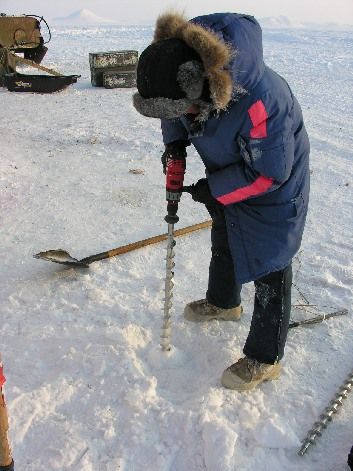 Volker Neth monitoring the ice thickness at the drilling platform
Volker Neth monitoring the ice thickness at the drilling platform
After a long day on the rig, we transferred with the night crew. They were just getting ready to start their work-day (night) on the rig.
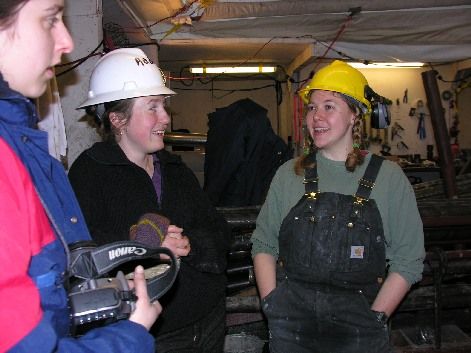 Addie and Kristina talk with Julia Gottschalk as they prepare for the night shift.
Addie and Kristina talk with Julia Gottschalk as they prepare for the night shift.
T-Mart... staying warm on Lake E!

